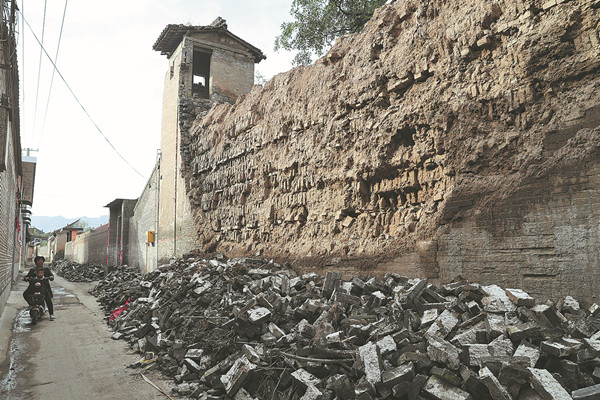Storms take their toll on heritage in Shanxi
Updated: 2021-11-02

The wall of an ancient courtyard in Xihuangzhong village, Xiangfen county, Shanxi, was damaged by heavy rainfall at the start of last month. [Photo by Zou Hong/China Daily]
Based on their value in terms of history, art and science, unmovable cultural treasures such as ancient tombs, architecture, cave temples and murals may be determined for protection as cultural relics at national, provincial, city or county level, according to the Cultural Relics Protection Law, which took effect in 1982 and was amended in 2017.
Bai Xuebing, director of the cultural relics protection and utilization department at the Shanxi Cultural Relics Bureau, said the province has 53,875 registered cultural relics. Of these, more than 530 are national key cultural relics protection sites, 779 are protected at provincial level and 11,297 sites are protected at county or lower levels.
Other relics are not included on the government protection list at any level. "There are about 40,000 such sites in Shanxi, half of them home to ancient architecture," Bai said.
He added that ancient structures not included on protection lists were severely damaged during the recent heavy rainfall, and losses are still being calculated.
"Villagers used to volunteer to repair and protect cultural relics that were not on protection lists at any level, but with the accelerating pace of urbanization, many people have left for cities, and relics sites have become forgotten," he said.
Shanxi has spent more on protecting cultural relics in recent years, with annual allocations in this regard from 2016 to last year reaching more than 100 million yuan ($15.60 million), according to Bai. In addition, 10 million yuan has been earmarked for protecting such relics at national and provincial levels.
However, Tang said relics that are not on government protection lists, including ancient architecture, still face the risk of being damaged or destroyed due to a shortage of cultural protection workers and the abandonment of cultural relics institutions at grassroots level.



